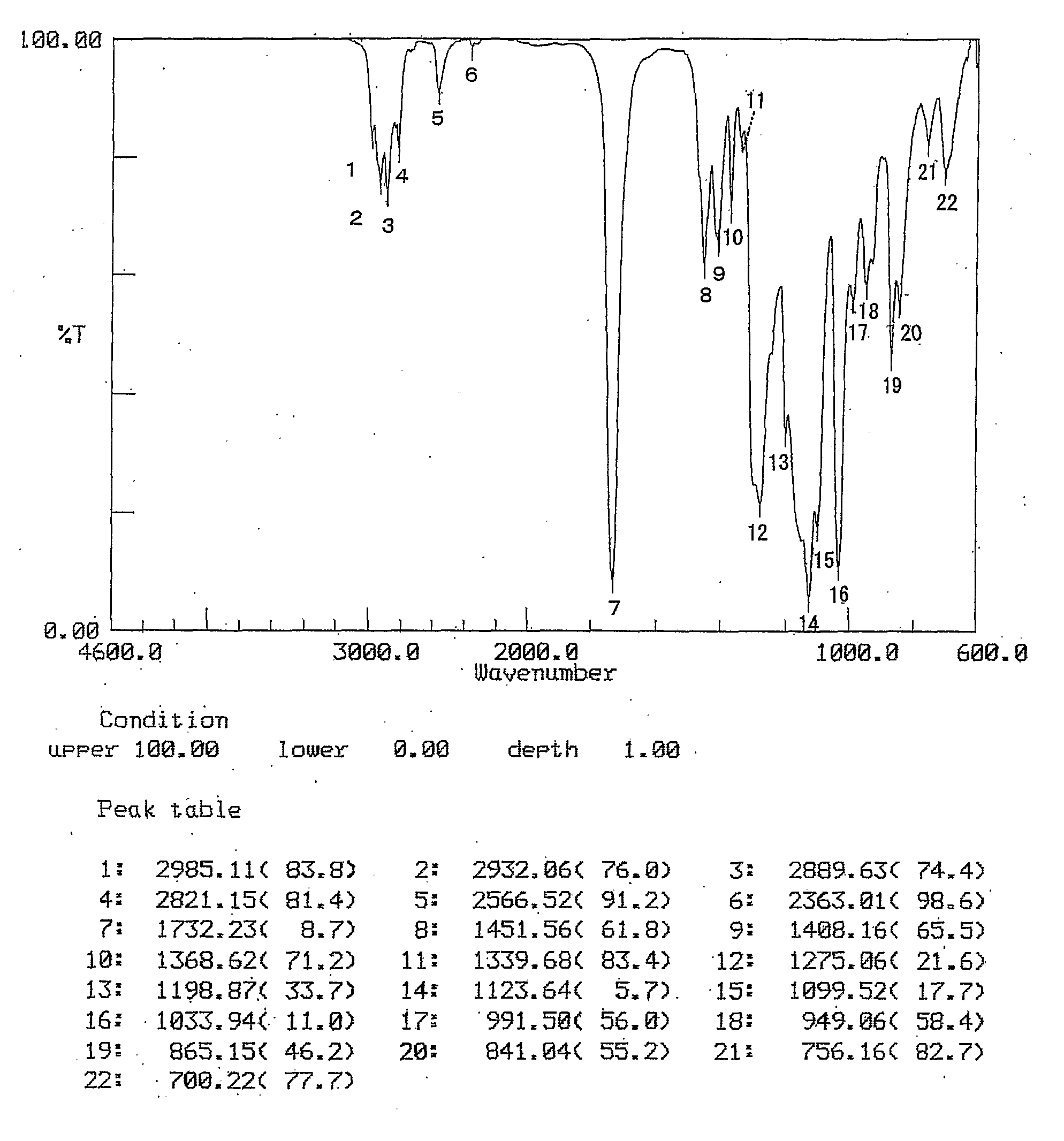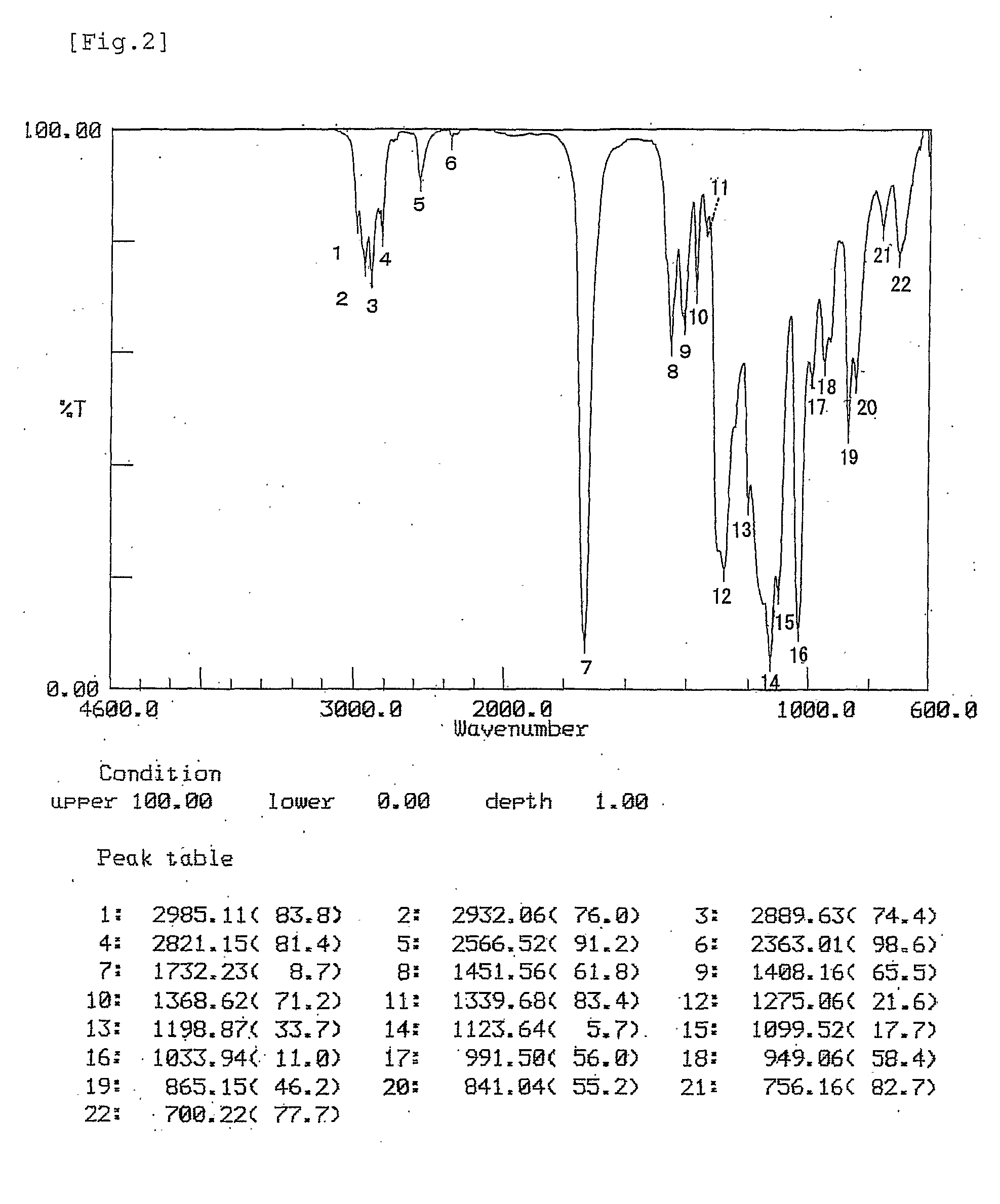Agent For Prermanent Hair Processing
a technology for permanent hair and hair, applied in the field of permanent hair processing agents, can solve the problems of no practical level, no known damage to hair and scalp, no sensitizing potential, etc., and achieve the effect of promoting partial removal of cuticles and reducing the power of thioglycolic acid
- Summary
- Abstract
- Description
- Claims
- Application Information
AI Technical Summary
Benefits of technology
Problems solved by technology
Method used
Image
Examples
synthetic example 1
Synthesis of 2-methoxyethyl thioglycolate (TGE-1)
[0075] A 1000-ml four-necked flask equipped with a thermometer and a cooling tube was charged with 300 g of methyl thioglycolate, 320 g of 2-methoxyethanol and 3.6 g of 95% sulfuric acid, followed by stirring at 88° C. for 5 hours. During the reaction, the pressure was slightly reduced by means of an aspirator connected with an upper end of the cooling tube, and thereby methanol that occurred with progress of the reaction was distilled away. After the completion of the reaction, part of the reaction liquid was sampled and analyzed by high performance liquid chromatography (HPLC) to determine the yield, which was found to be 42% from calculation of the concentration of the objective compound in the reaction liquid.
[0076] Subsequently, the reaction liquid was directly concentrated and distilled under reduced pressure (b.p. 65° C. / 0.6 kPa). This purification provided 123 g of 2-methoxyethyl thioglycolate (TGE-1).
[0077] The concentrati...
synthetic example 2
Synthesis of 2-ethoxyethyl thioglycolate (TGE-2)
[0096] A 1000-ml four-necked flask equipped with a thermometer and a cooling tube was charged with 300 g of methyl thioglycolate, 374 g of 2-ethoxyethanol and 3.6 g of 95% sulfuric acid, followed by stirring at 80° C. for 5 hours. During the reaction, the pressure was slightly reduced by means of an aspirator connected with an upper end of the cooling tube, and thereby methanol that occurred with progress of the reaction was distilled away. After the completion of the reaction, part of the reaction liquid was sampled and analyzed by gas chromatography (GC) to determine the yield, which was found to be 44% from calculation of the concentration of the objective compound in the reaction liquid.
[0097] Subsequently, the reaction liquid was directly concentrated and distilled under reduced pressure (b.p. 99 to 103° C. / 2.1 kPa). This purification provided 89 g of 2-ethoxyethyl thioglycolate (TGE-2).
[0098] The concentration of the component...
synthetic example 3
Synthesis of 2-butoxyethyl thioglycolate (TGE-3)
[0108] A 1000-ml four-necked flask equipped with a thermometer and a cooling tube was charged with 300 g of methyl thioglycolate, 489 g of 2-n-butoxyethanol and 3.6 g of 95% sulfuric acid, followed by stirring at 80° C. for 7 hours. During the reaction, the pressure was slightly reduced by means of an aspirator connected with an upper end of the cooling tube, and thereby methanol that occurred with progress of the reaction was distilled away. After the completion of the reaction, part of the reaction liquid was sampled and analyzed by HPLC to determine the yield, which was found to be 35% from calculation of the concentration of the objective compound in the reaction liquid.
[0109] Subsequently, the reaction liquid was directly concentrated and distilled under reduced pressure (b.p. 84° C. / 0.5 kPa). This purification provided 136 g of 2-butoxyethyl thioglycolate (TGE-3).
[0110] The results of TGE-3 identification are given below.
[011...
PUM
| Property | Measurement | Unit |
|---|---|---|
| temperatures | aaaaa | aaaaa |
| pH | aaaaa | aaaaa |
| pH | aaaaa | aaaaa |
Abstract
Description
Claims
Application Information
 Login to View More
Login to View More - R&D
- Intellectual Property
- Life Sciences
- Materials
- Tech Scout
- Unparalleled Data Quality
- Higher Quality Content
- 60% Fewer Hallucinations
Browse by: Latest US Patents, China's latest patents, Technical Efficacy Thesaurus, Application Domain, Technology Topic, Popular Technical Reports.
© 2025 PatSnap. All rights reserved.Legal|Privacy policy|Modern Slavery Act Transparency Statement|Sitemap|About US| Contact US: help@patsnap.com



